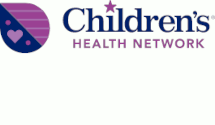Language Disorders Factsheet (for Schools)
What Teachers Should Know
Students with language disorders may have trouble understanding or being understood through all forms of communication — verbal, nonverbal, and written. There are different types of language disorders:
- A receptive disorder is when kids don’t understand what is being communicated to them.
- An expressive disorder is when kids have trouble communicating thoughts and feelings to others.
- A cognitive-communication disorder affects a child’s ability to remember things, pay attention, solve problems, organize thoughts, and more.
Kids can have one or more of these disorders, and can have trouble with:
- reading, writing, or spelling
- finding the right words to say or write, or combining words to form ideas
- applying grammatical rules, like using past, present, or future tenses of words
- understanding the meaning of words and sentences
- understanding or following directions
- taking turns during a conversation
Treatment for language disorders focuses on speech-language therapy. Kids improve their skills by working with a therapist. The sooner therapy begins, the better.
What Teachers Can Do
Students with language disorders may benefit from individualized education programs (IEPs) or 504 education plans. Many kids see a speech-language pathologist during the school day. Therapy may be one or more times a week, depending on the severity of the problem.
Kids with language problems can feel stressed and anxious, which can make it even harder to talk and express themselves. A student may speak slowly in class and should be given plenty of time to express thoughts. It’s not helpful to interrupt or complete a sentence for the student, and might embarrass them.
To support students in your classroom:
- Move kids closer to you. Having kids with a language disorder sit closer to the front of the class makes it easier to help them with questions and assignments.
- Make sure kids understand and write down assignments correctly to help avoid confusion.
- Be patient (and encourage classmates to be patient) when students with language disorders are speaking in class.
- Give extra time to complete tests or assignments when needed.
- Use technology to make learning easier. This includes having real-time captioning on any videos used in the classroom and using voice-recognition software on computers.
- Have a plan for missed class time. Students with language disorders may miss class time to go to therapy.
- Talk about and celebrate differences. Students with language disorders want to be accepted like everyone else. But sometimes they’re targeted by others who see them as “different.” Talk about and celebrate differences, and focus on the interests that kids share. Be mindful of bullying, and keep a zero-tolerance policy for that behavior.
By addressing special needs and offering support when needed, you can help students with a language disorder learn as best as possible.
